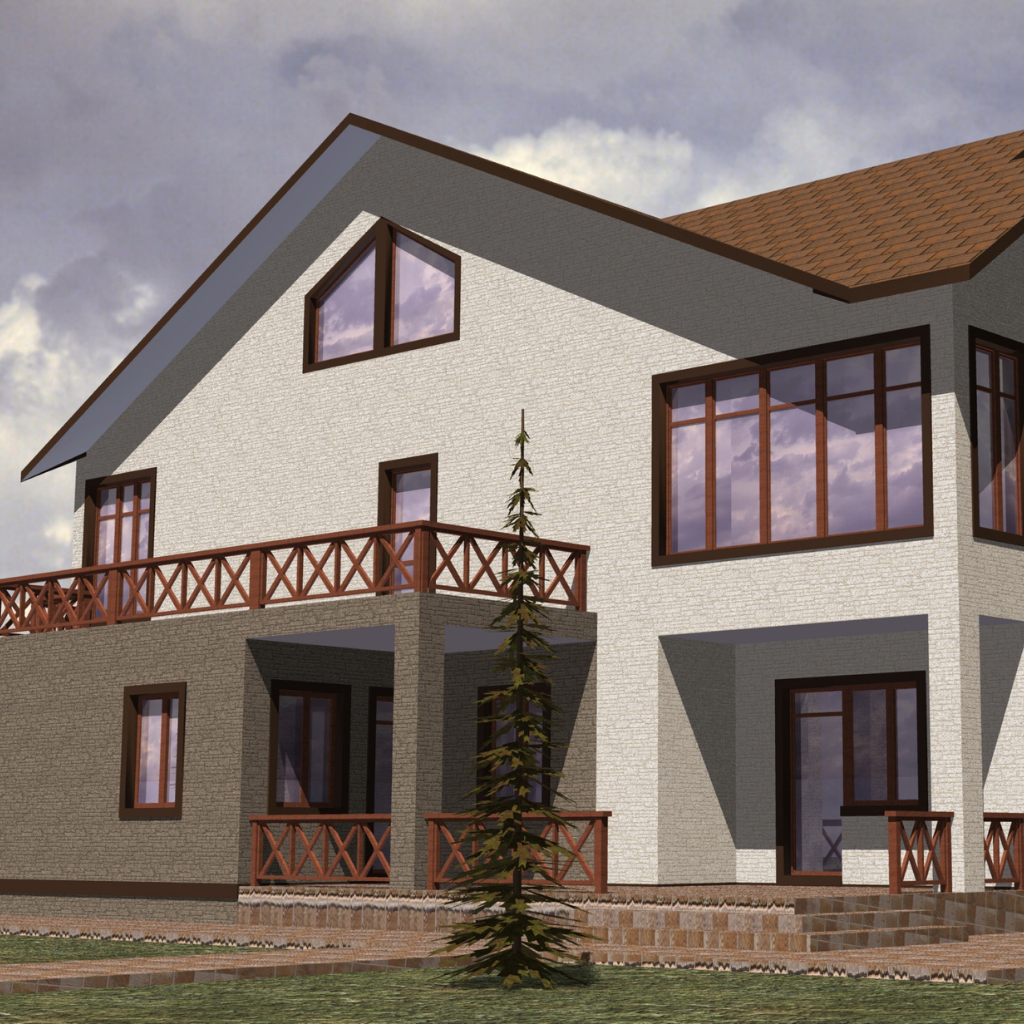A single-story extension can enhance a home by expanding living space and providing more space, introducing more natural light, thereby transforming the existing structure’s functionality and ambiance. Homeowners can maximize indoor-outdoor flow and boost property value by integrating options such as wraparound, rear, or side extensions. Open-plan layouts improve the flow and connection throughout a living space. To truly understand their benefits, it’s essential to explore the detailed planning and execution strategies that ensure their success.
Key Takeaways
Adds Extra Space: Create additional rooms such as larger kitchens, home offices, or guest areas to better accommodate your lifestyle.
Enhances Natural Light: Incorporate elements like skylights and full-height glazing to brighten interiors and create a more open, airy feel.
Boosts Property Value: Improve both functionality and visual appeal, contributing to a higher market value for your home.
Flexible Design Options: Choose from wraparound, rear, or side extensions to suit your property’s unique layout and needs.
Improves Indoor-Outdoor Flow: Designs that include direct garden access help blur the line between inside and outside living spaces.
What Are the Best Extension Ideas for a Single Storey?
Exploring popular single-story extension ideas highlights a growing focus on making the most of limited space while boosting visual appeal. Whether you’re gathering inspiration or preparing to start construction, understanding the cost of a single-story extension is essential for effective planning and budget management.
Wraparound extensions provide a comprehensive way to expand your living space by extending along multiple sides of the property. When carefully planned, a single-story wraparound extension can improve both the functionality and flow of your home, seamlessly integrating with the existing layout and structure. If your property is within a conservation area, be prepared for extra planning regulations and approval procedures that may affect your project’s timeline and design options. Engaging with your local planning authority early and involving neighbors through a consultation scheme can help address concerns, reduce the risk of objections, and keep your project on track.
Effective project management is essential to ensuring the smooth execution of an extension project. From selecting the right construction company and coordinating the team to overseeing installation, plumbing, and interior work, each stage demands careful management to ensure both efficiency and quality.
For homeowners looking for an affordable way to increase natural light and strengthen the connection to their garden, adding a conservatory to the extension is a popular option. Working with professionals can offer valuable guidance on design, ideal dimensions, and how to get the most out of your investment.
With thoughtful planning and a structured approach, even the most complex projects can run smoothly, creating a beautiful and practical space that enriches both your home and lifestyle.
Exploring Popular Single-Storey Extension Ideas
Rear extensions are one of the most popular single-storey extension options due to their seamless integration with existing structures. They improve the flow between the ground floor and the garden, and can also provide room for a new main bedroom. When considering a project of this scale, it’s important to factor in the single storey extension cost, which can vary depending on design complexity, materials, and required structural work.
Side extensions, though often underutilized, provide a smart way to make use of narrow outdoor areas, offering valuable additional living space. For homeowners looking to maximise space without dramatically altering the property’s footprint, side extensions offer a cost-effective solution—though, again, understanding the full single storey extension cost is key to proper planning and budgeting.
Integrating an open-plan design in these extensions can create versatile, multifunctional areas perfect for family living and entertaining. Opting for an open-plan layout within these extensions can transform the new space into a vibrant hub for family activities.
When it comes to roofing, flat roofs provide a sleek, contemporary look, while pitched roofs complement traditional architecture by combining visual harmony with increased structural strength.
Maximizing Space with Wraparound Extensions
When planning to expand a single-storey home, wraparound extensions are a highly effective way to maximize space and transform your living areas. This approach provides extra living space while preserving a natural flow between the original structure and the new addition.
Wraparound extensions typically combine both rear and side extensions, encircling the home. This design not only makes the most of the available space but also improves the property’s overall view and aesthetic appeal. Whether you’re aiming for a modest upgrade or a large single storey extension, the flexibility of this layout allows homeowners to fully utilize their extra floor space. It’s a cost-effective alternative to moving, offering a smart solution to gain more room without the hassle of relocation.
Some homeowners even opt for a return extension, which connects the rear and side extensions in an L-shaped configuration, further enhancing the openness and usability of the ground floor.
Before starting your project, it’s crucial to understand the costs involved and ensure you meet all legal requirements. Obtaining planning permission from the local authority is often necessary, as wraparound extensions may not qualify as permitted development. Compliance with building regs and oversight from building control is essential to guarantee safety, stability, and energy efficiency—particularly regarding proper insulation, solid foundations, and the use of appropriate materials such as wood, tiles, and paint.
When planning, many decide to extend kitchens and living rooms or create multi-functional areas. The result is often a seamless integration that feels like part of the rest of the home. A professional guide is highly recommended to help navigate the design, material selection, and construction phases.
Naturally, the scope of work and costs will vary based on the complexity and design of the project. Homeowners can expect a strong return on investment, enhancing both their lifestyle and the value of their property. Choosing quality materials and hiring experienced contractors ensures the installation is carried out correctly.
Ultimately, if you’re looking to create more functional space while saving money over time, a wraparound single-story extension is a prime example of how thoughtful planning can significantly enhance your home.
What Are the Benefits of a Single Floor Extension?
A single storey extension greatly increases living space, accommodating evolving lifestyle needs without the complexities of adding multiple floors. It’s a fantastic way to maximize the use of space while keeping the design simple and easy to execute. Single-story extensions are typically more cost-effective than other types of building projects, offering an affordable way to expand your home. They also enhance natural light intake, boosting both the appearance and practicality of interior spaces. The size and design of the extension allow for more efficient use of space, ensuring a seamless connection between new and existing areas. Careful attention to the layout is crucial to maximize every available inch.
Additionally, these extensions create a seamless connection between different parts of the home, promoting smooth movement that improves both functionality and flow. To make sure everything is managed correctly, it’s wise to hire specialists who can support you throughout the entire process—from design through to the finishing touches.
If you’re thinking about a conversion or adding new features like a boiler or built-in storage, it’s important to carefully assess your space and select materials and elements that complement your home’s style. Seeking advice from professionals can also help you stay on budget while turning your vision into reality.
While the project may initially feel overwhelming, starting with a clear plan is always wise. Agree on a clear schedule with your team to prevent unnecessary delays. Once you’re satisfied with the initial designs, you can move forward with confidence, knowing your project is well managed.
Many homeowners take advantage of free consultations with suppliers to select materials that best match their vision. Whether you’re just beginning or ready to start, these steps will guide you toward creating a space that meets your needs and enhances your home. The journey from concept to completion is a rewarding process that, with the right planning, results in a space you and your family will enjoy for years to come.
Increasing Living Space with Extensions
Expanding a home through the addition of a single-story extension offers a myriad of benefits, primarily the seamless augmentation of living space. Whether adding a single-story rear extension, a side extension, or even a small extension, these additions integrate smoothly with existing structures, maximizing utility and aesthetics. It’s a simple yet highly effective means of transforming your home.
Here are the key advantages:
Optimized Floor Space: A single storey extension notably increases the usable floor space within a home, providing room for additional functionalities like a larger kitchen, an extra bedroom, or a home office. This extension can bring much value to your property by giving you the space to accommodate your family’s growing needs.
Versatility: Whether opting for a large single-story extension or a more modest bump-out, the new extension can be customized to suit various personal and architectural needs. There are many options, and working with a surveyor can help you create the perfect plan to match your home’s style.
Enhanced Property Value: Expanding the living space often translates into an increase in property value, making home extensions a worthwhile investment for homeowners. When you decide to sell, this extension can make your home more appealing to potential buyers, especially if the extension is recently completed with high-quality fittings and electrics. It’s a great way to apply your vision for a more functional, modern living space that will sell quickly.
When planning your extension, it’s essential to consider the costs of labor, materials, and any required plumbing or electrical work. Depending on the project’s size, you may need to submit your designs to the local council for approval and, in some cases, apply for the necessary planning permissions.
To stay organized, it’s helpful to list out your plans and make sure all components—from parts and fittings to installations—are accounted for. Hiring professionals such as a licensed plumber, electrician, and experienced contractor will ensure the work is completed efficiently and meets all safety standards.
Ultimately, if you’re ready to take on a home expansion, the investment in a single-storey extension is a project that adds tremendous value, functionality, and beauty to your home. Plus, it’s much less complicated than a full-scale renovation, and it can often be done with less disruption to your daily life.
Enhancing Natural Light in Your Home
Integrating a single-story extension into a home maximizes space and considerably enhances the influx of natural light, particularly when designed with large windows or skylights. A well-planned extension can transform how light permeates the interior, effectively merging inside and outside spaces. Whether opting for a flat roof extension with integrated skylights or a pitched roof with expansive glass panels, the result is a brighter, more inviting living environment. Consider a single-story kitchen extension with full-height glazing facing a patio area to maximize daylight and visually expand the dining area.
| Feature | Benefit | Ideal for |
| Large Windows | Amplifies natural light | Dining areas, Living rooms |
| Skylights | Enhances vertical natural illumination | Kitchens, Bathrooms |
| Transparent Boundaries | Blurs lines between indoor and outdoor | Patio areas, Garden extensions |
Creating a Seamless Ground Floor Layout
Building upon the enhanced natural lighting achieved through strategic design choices in single-storey extensions, the architectural integration of such expansions can further optimize the ground floor layout of a home.
This planning offers a multitude of benefits:
- Enhanced Functionality: By carefully considering the kitchen extension cost and extension cost in the UK, homeowners can create a utility room or a seamlessly flowing kitchen-diner area that maximizes usability and efficiency.
- Aesthetic Cohesion: Utilizing high-quality building materials guarantees that the new space not only meets but enhances the existing structure’s aesthetic, fostering a perfect space for both living and entertaining.
- Regulatory Compliance: Attention to details like the party wall agreement facilitates smooth planning and execution of a rear single-story extension, confirming all modifications are legally sound and structurally secure.
What Types of Single Storey Extensions Are Available?
Single-story extensions offer various configurations to enhance a home’s living space and aesthetic appeal.
The side extension, often employed to utilize narrow lateral spaces, seamlessly integrates with the existing structure to expand functional areas.
Meanwhile, rear extensions capitalize on backyard space to create expansive, light-filled environments.
Wraparound extensions provide a thorough solution by enveloping multiple sides of a property.
Exploring the Single-Storey Side Extension
Exploring single-storey side extensions reveals a variety of architectural options that can greatly enhance a home’s functionality and aesthetic appeal. Typically undertaken by skilled house extension builders, these projects expand living areas without significantly altering the original footprint.
Key benefits include:
Space Maximization: Side extensions provide valuable additional square footage for living areas or utilities, making them a smart option for properties with limited land.
Design Integration: Architects carefully design these extensions to blend seamlessly with the existing structure, ensuring they complement the home’s original style.
Regulatory Compliance: While building a side extension usually involves submitting a planning application, this process helps ensure the design aligns with local architectural standards, boosting both functionality and property value.
The Versatility of a Single-Storey Rear Extension
While side extensions serve a specific purpose, a single-storey rear extension offers unmatched versatility, easily adapting to a wide range of homeowner needs and design preferences.
This house extension increases living space while blending seamlessly with the existing structure.
By consulting a structural engineer, homeowners can ensure the design meets building control regulations and permitted development rights, making the approval process smoother.
Rear extensions like these can transform a home by adding a spacious kitchen, a larger living area, or an additional bedroom, all while preserving the home’s external harmony.
Careful planning and execution of a single-story rear extension can significantly improve both the functionality and visual appeal of a home.These essential tips for your loft space can provide valuable guidance for those also considering vertical expansion.

Innovative Single-Storey Wraparound Extension Options
Building on the idea of rear extensions, homeowners can also explore the creative and practical advantages of wraparound extensions.
These innovative single-story wraparound designs cleverly combine rear and side extensions to significantly expand living space.
Here are some of the available options:
- Full Wraparound: Encircles the rear and side of a property, maximizing floor space and dramatically altering the home’s layout.
- L-Shaped Design: Ideal for corner plots, it seamlessly integrates the rear and one side extension, substantially increasing space.
- Glass-centric Extension: Features expansive glass panels or sliding doors to maximize natural light and seamlessly connect indoor and outdoor spaces, ideal for a contemporary look.
How to Plan a Successful Single-Storey Extension Project?
Careful planning is essential to the success of a single-story extension. A crucial aspect of this involves understanding the planning permission process, which can differ based on the size and location of your project. To ensure all necessary approvals are secured before starting construction, it’s crucial to proceed with the required applications promptly. Choosing the right type of extension involves considering factors such as construction costs, structural requirements, and how well it complements the existing property’s aesthetics. Taking the time to carefully evaluate your options will help you make a well-informed decision that aligns with both your needs and budget. Whether you opt for a faster, simpler project or a more intricate design, thorough planning sets the foundation for success.
Managing the project budget effectively demands accurate cost estimates and strategic resource allocation. By overseeing each phase diligently, you can avoid unnecessary expenses, negotiate cost-sharing with contractors, and maintain financial control throughout the construction process.
If you’re moved by the idea of a more functional and aesthetically pleasing home, obtaining a quote early on can help you understand terms and conditions and allow you to turn your dream into a reality without surprises. Being proactive and informed will help you stay ahead of the game and avoid delays in the project.rmed will help you stay ahead of the game and avoid delays in the project.

Creating a Comprehensive Extension Plan
Planning a successful single-story extension starts with creating a detailed plan that carefully considers both the aesthetic and practical needs of the project.
Key steps to consider include:
Initial Consultation: Meet with professionals such as architects, project managers, and potentially local planning authorities to assess the feasibility of your ideas and ensure compliance with local regulations.
Design Development: Focus on designing a single-story extension that harmonizes with the existing structure yet fulfills modern needs. Detailed architectural plans should outline every aspect, from spatial distribution to material specifications.
Cost Estimation: Prepare a detailed budget considering all expenses, including construction, materials, and fees, to avoid financial overruns and guarantee a smooth building process.
Managing the Build Cost Effectively
Ensuring cost-effectiveness when managing the construction of a single-story extension demands careful planning and smart decision-making.
Here are three key steps to help you manage the build efficiently and within budget:
Detailed Budgeting: Outline all possible expenses, including the average cost per square meter and any additional fees that may occur.
Material Selection: Choose materials that balance durability with visual appeal.
Contractor Selection: Employ skilled contractors who provide clear pricing and deliver efficient service.
Their expertise helps ensure the single-story extension is finished on time and within budget, reducing the risk of unexpected costs.
How Much Does It Cost to Build a Single-Storey Extension?
The cost of building a single-story extension is generally influenced by factors such as materials, labor, and design complexity.
On average, the price per square meter can vary widely depending on architectural styles and finish selections.
Grasping these cost drivers is crucial for homeowners to accurately budget their extension projects.
Factors Affecting the Extension Cost
Determining the cost of building a single-story extension involves several factors, each contributing variably to the overall expense.
Here are the primary factors:
- Size and Complexity: The bigger the extension, the higher the cost. Complexity in design also affects the price, as more intricate features require additional resources and skilled labor.
- Material Selection: The type of materials used can significantly impact the overall cost of a single-story extension, with premium, long-lasting options typically costing more.
- Location: Geographical location can impact the cost of an extension. Urban areas generally entail higher labor and material costs compared to rural settings.
Understanding these factors guarantees a more accurate estimation of a single-story extension’s cost in the region.
Average Cost Per Square Metre for Extensions
Understanding the factors that affect extension costs is key to accurately estimating the average expense per square meter. For homeowners looking to add single-story extensions, the typical cost per square meter usually falls between £1,500 and £2,500. The variation in costs often depends on whether you’re opting for a modest rear extension on a semi-detached house or a more ambitious design aimed at transforming the entire home. Local authority regulations also significantly influence expenses, especially through planning permissions and compliance requirements. Choosing designs that minimize disruption to everyday living not only improves the home’s appearance but also helps ensure a more efficient and cost-effective construction process.
Do You Need Planning Permission for a Single Storey Extension?
For homeowners considering an expansion, it’s essential to find out if a single-story extension requires planning permission. The approval process involves complying with architectural guidelines and local regulations, which can vary greatly by region. In certain situations, exemptions may apply, permitting extensions without formal planning permission based on factors like size, location, and the effect on the surrounding environment.
Navigating Planning Application Requirements
While pondering a single-story extension, one must first ascertain whether planning permission is required, a process governed by specific regulatory frameworks.
Here are key aspects to reflect on:
- Development Rights: Check if the intended single-story extension falls within the permitted development rights associated with the original house.
- Planning Application Requirements: Detailed plans must illustrate how the extension does not extensively alter the aesthetic of a detached or semi-detached home, preserving the visual integrity of the neighborhood.
- Proven Track Record: Work with experienced professionals who have a strong track record in securing planning permissions and ensuring the extension harmonizes with the first floor’s design and the household’s daily lifestyle, especially when dealing with small house extensions.
Exemptions from Planning Permission
Although many homeowners assume that any structural addition requires planning permission, certain single-story extensions can be exempt under specific conditions.
This exemption is especially applicable when the extension project focuses on increasing living space without significantly changing the external appearance of a detached house. For instance, a pitched roof extension that aligns with the existing architectural style may not need planning permission, provided it remains within specified size limits. These exemptions streamline the home improvement process, making it simpler to expand your space. Knowing these details can make a big difference, making a single-story extension an attractive choice for homeowners wanting to expand their living area without dealing with complex bureaucracy.
Conclusion
In summary, single-story extensions provide a versatile combination of improved functionality and visual appeal, significantly transforming living spaces. They seamlessly integrate with existing architectural elements and can increase property value. Successful projects rely on careful planning, adherence to local regulations, and detailed cost evaluation. For homeowners aiming to enlarge their living space while maintaining architectural consistency, single-story extensions offer a wise and attractive investment.















